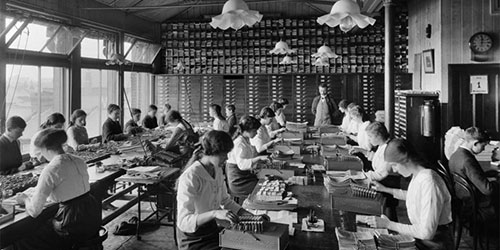Did you know that “computers” existed before software and hardware. Not too long ago, we relied on “human computers” to get our calculations and from the 1800s onwards this task was predominantly performed by women.
This International Women's Day we want to highlight the important tasks performed by all the invisible women, by showcasing just a few who helped pioneer the way forward in the computing sphere.
Ada Lovelace:
Likely the most well known name on this list is Ada Lovelace. Widely considered to be the first ever computer programmer, in 1843 she described an algorithm for the Analytical Engine to compute Bernoulli numbers. This allowed for the first time the idea that the ability of computing devices could be expanded into what they are today. From then forth, the only thing limiting computers was technology.
The Women Of The ENIAC:
Just a little over a 100 years later in 1945, a group of 6 women programmed the Electronic Numerical Integrator and Computer. This was the first ever programmable, electronic, general-purpose digital computer. Their names were Jean Jennings, Marlyn Wescoff, Ruth Lichterman, Betty Snyder, Frances Bilas, and Kay McNulty. Their expertise in the ENIAC when the men came back from war meant that these women were irreplaceable in their roles as programmers as the ENIAC could speed up calculations that could take 4 hours to a matter of seconds.
Rear Admiral Grace Hopper:
In 1959, Grace Hopper was the first programmer to theorise and create a machine-independent programming language. Her programming-language is viewed as the predecessor of the common business-oriented language COBOL, a high-level programming language still in wide-use until the early 2000s. However, older systems of processing that are yet to be updated still frequently use this coding.
She also famously coined the term “debugging” after a moth was trapped inside her computer. However, most importantly her invention of the compiler, which allowed computers to translate instructions into code, completely revolutionised the computing industry forever.
Mary Allen Wilkes:
Mary Allen Wilkes was the first to use a personal computer in her own home. In 1964 she was working on the development of the Laboratory INstrument Computer (LINC), which was the first ever microcomputer, in her parent’s living room. She continued to help the team develop and write mammals for the use of the LAP6, which allowed the user to edit and manipulate documents in real-time. This aided in the development of “open source” capabilities.
Dr Shirley Ann Jackson:
Whilst working for AT&T in the 1970s, Dr Shirley Ann Jackson conducted scientific research that helped lead to the development of caller ID and caller waiting. Whilst initially you may be confused as to the significance this had on computer technology, this directly impacted the development of the portable fax and fibre optic cables. Easily accessible, fast internet would not be possible without the invention of caller ID.
These are just 5 examples of the many ways women have shifted the way we interact with computers and technology. From calculating, theorising, programming, testing and researching, women have always been a part of, and will always play a large role in the development of computers.
We hope you learnt something new and want to wish everyone a Happy International Women's Day from our team here at Convene.








